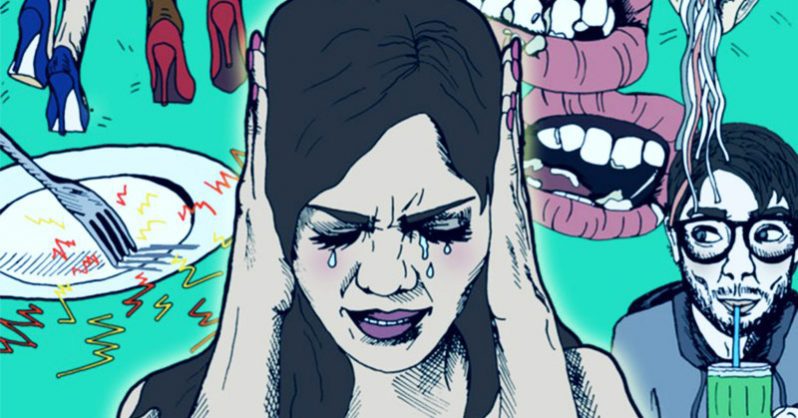
La misofonía —del griego μίσος (misos): aversión, y φωνή (foné): sonido— o sensibilidad selectiva al sonido. Esw un tratorno trastorno neurofisiológico y del comportamiento complejo de origen multifactorial, caracterizado por una intensa respuesta fisiológica y emocional producida por la intolerancia a estímulos auditivos/movimientos de un mismo patrón, con independencia de sus propiedades físicas., es un trastorno psiquiátrico que consiste en la falta de tolerancia a los sonidos cotidianos producidos por el cuerpo de otras personas, como comer, sorber, toser, masticar, o también por sonidos producidos al utilizar ciertos objetos, los cuales pueden desencadenar ansiedad y conductas agresivas en el paciente. El término fue acuñado por los médicos polacos Pawel y Margaret Jastreboff y no tiene reconocimiento oficial en las clasificaciones aceptadas internacionalmente de trastornos psiquiátricos DSM-5 e ICD-10. Por lo tanto es importante tener en cuenta que el término misofónico o misofónica es de aparición reciente en la literatura médica y su uso no está consensuado para calificar a los pacientes que padecen estos síntomas.
<(A.):Misophonie: misophonie (von griech.: μῖσος misos ‚Hass‘ und φωνή phonḗ‚ Geräusch‘), wörtlich „Hass auf Geräusche“, ist eine Form der verminderten Geräuschtoleranz gegen bestimmte Geräusche. Es wird angenommen, dass es sich um eine neurologische Störung handelt, charakterisiert durch negative Reaktionen auf bestimmte Geräusche, egal ob diese als laut oder leise wahrgenommen werden. Eine Klassifizierung nach ICD-10 oder DSM-IV-TR besteht nicht. Im Jahr 2013 formulierten drei Psychiater des Medizinischen Akademischen Zentrums Amsterdam Diagnosekriterien für Misophonie auf der Basis der Untersuchung von 42 Patienten und rieten dazu, eine Klassifizierung einzurichten.
<(F.): Misophonie: la misophonie, littéralement « haine du son », est un trouble neuropsychique rarement diagnostiqué mais commun1 caractérisé par des états psychiques forts désagréables (colère, haine, anxiété, rage, dégout2 ) déclenchées par des sons spécifiques. L’intensité des sons peut être élevée ou faible. Les termes misophonie, Selective Sound Sensitivity Syndrome et Soft Sound Sensitivity Syndrome réfèrent au même trouble. La maladie n’est pas classée comme un trouble discret dans le DSM-5 ou la CIM-10 ; cependant, une étude menée en 2013 par trois psychiatres de l’Academic Medical Center d’Amsterdam sur 42 patients misophones suggère sa classification en tant que trouble psychique à part.
<(Ing.): Misophonia: misophonia, literally “hatred of sound”, was proposed in 2000 as a condition in which negative emotions, thoughts, and physical reactions are triggered by specific sounds. It is also called “select sound sensitivity syndrome” and “sound-rage”. Misophonia has no classification as an auditory, neurological, or psychiatric condition, there are no standard diagnostic criteria, it is not recognized in the DSM-IV or the ICD-10, and there is little research on how common it is or the treatment. Proponents suggest misophonia can adversely affect ability to achieve life goals and to enjoy social situations. Treatment consists of developing coping strategies through cognitive behavioral therapy and exposure therapy.
TÉRMINOS RELACIONADOS:
